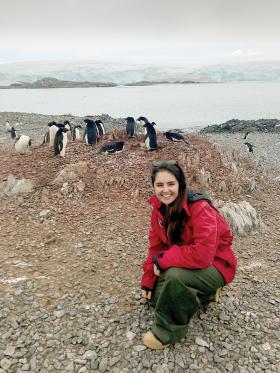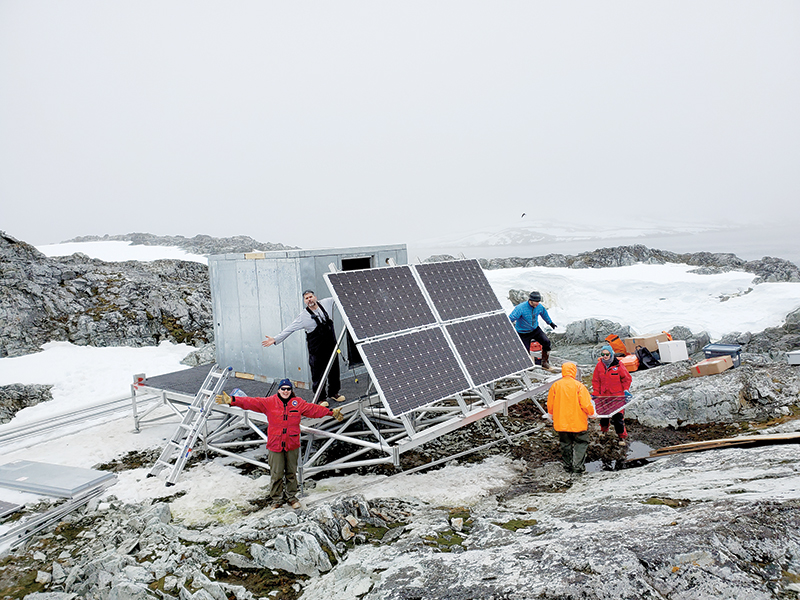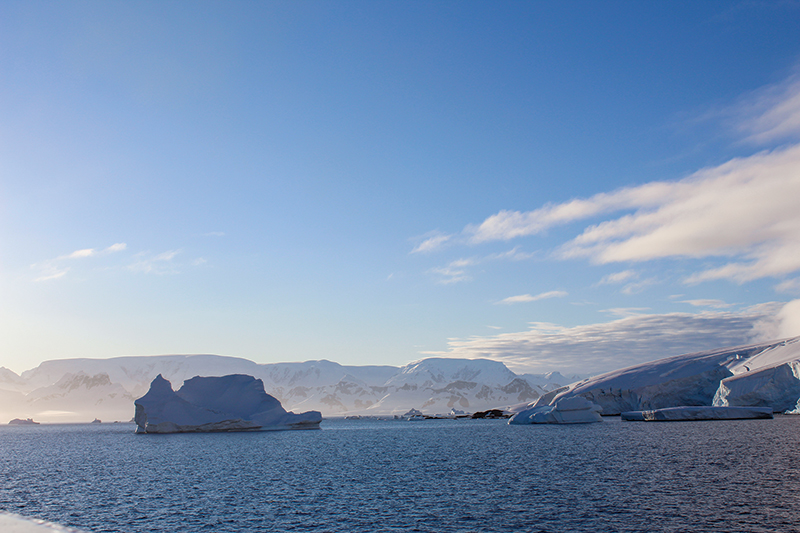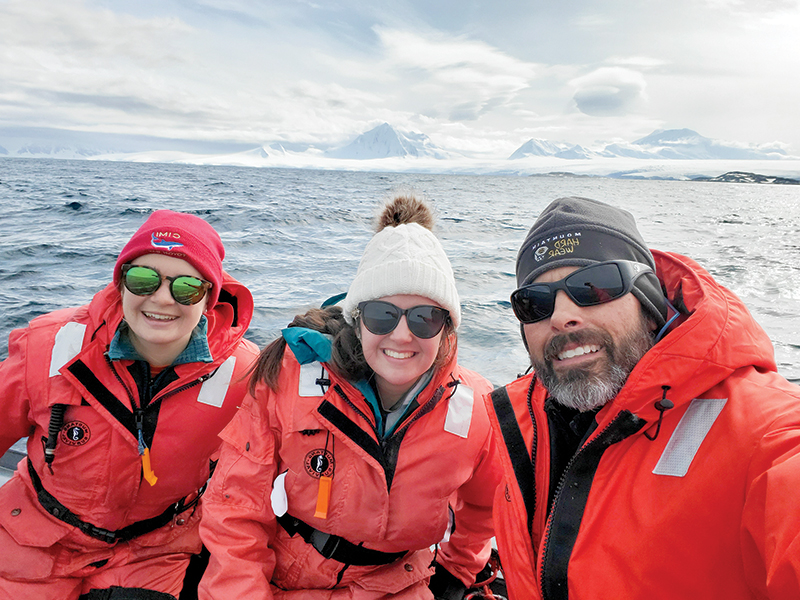Jacquelyn Veatch
Spring
2020
Alumni Spotlight
Jacquelyn Veatch
Jacquelyn Veatch
What she does:
 I am a graduate student at Rutgers University, working toward a PhD in physical oceanography. As part of the Rutgers University Center for Ocean Observing Leadership (RUCOOL), I investigate physical mechanisms related to the marine food web in Palmer Deep, Antarctica, and in the Mid-Atlantic. In light of increased climate variability, I study physical features in the ocean that accumulate organisms at the base of the food chain in order to better support maintenance of biological hotspots and understand the coupling of biological and physical processes.
I am a graduate student at Rutgers University, working toward a PhD in physical oceanography. As part of the Rutgers University Center for Ocean Observing Leadership (RUCOOL), I investigate physical mechanisms related to the marine food web in Palmer Deep, Antarctica, and in the Mid-Atlantic. In light of increased climate variability, I study physical features in the ocean that accumulate organisms at the base of the food chain in order to better support maintenance of biological hotspots and understand the coupling of biological and physical processes.
How she got there:
I have a bachelor’s degree in biophysics from The George Washington University (GW). From my first research project at GW, in an immunology lab, I was captured by the thrill of scientific discovery. I explored a wide variety of research areas, from urban planning to pathogens, before settling on physical oceanography. My leap to physical oceanography was catalyzed by a few summers spent as a wilderness guide in northern Maine and my determination to combine physics and Earth systems.
As an undergraduate, I met with Dr. Keryn Gedan, a brilliant ecologist and the head of GW’s coastal ecology lab, hoping to get involved in her cutting-edge wetland research. I had three years of laboratory experience, four semesters of a biophysics degree, and a boatload of questions about the physical mechanisms of water moving through coastal systems. Dr. Gedan looked at me with amusement and encouragement—she had never worked with a physics student before! I convinced her to let me join her lab and dove right in.
This 20-minute meeting launched my career into the world of Earth and climate science. At the time, I didn’t know any physicists who were studying the environment. It turns out, however, there are a lot of scientists using physics to tackle complex environmental problems and a lot of physics in the ocean!

Best part of her job:
Field research in Palmer Deep, Antarctica. Being in Antarctica felt like being deployed to the front line of climate change. The poles are active agents and sensitive indicators of climate change. Seeing how far a nearby glacier has retreated firsthand made global warming feel much more real and gave my research a sense of urgency. Palmer Deep is the perfect ecological laboratory for observing the marine food web, and the continent is absolutely breathtaking!
More generally, I enjoy the distribution of work. Between observational data, simulated experiments, fieldwork, and office time, I have a variety of work experiences and environments.
Most frustrating part about her job:
The weather. Most field operations we conduct are in small boats that require relatively good weather conditions. Sometimes we lose entire days because the wind speed is too high. Alas, this is an unavoidable side effect of fieldwork in remote locations.

How she uses physics:
The movement of water masses through and across the ocean is inherently physical. Currents, waves, eddies, and many other movements are driven by temperature and salinity fluxes that affect the densities of seawater. Tides and the Coriolis effect are driven by lunar and solar movements as well as the rotation of our planet. All of these mechanisms can be derived from physics—an object in motion tends to stay in motion, while an object at rest tends to stay at rest, unless acted upon by an outside force. Water moving from one place to another carries nutrients and a slew of living critters categorized as plankton, meaning “drifters.” I use physics to decipher how, where, and why water is moving in order to understand the impact on the marine food web.

